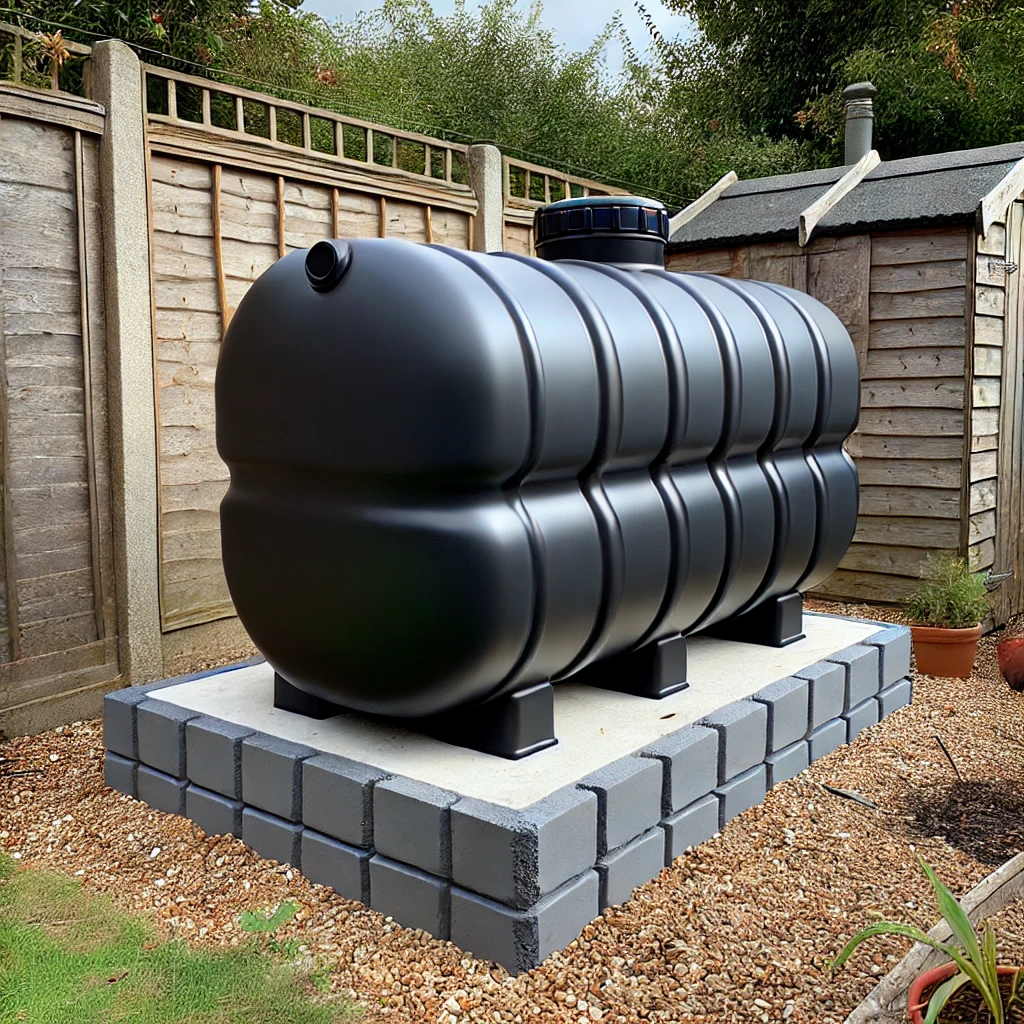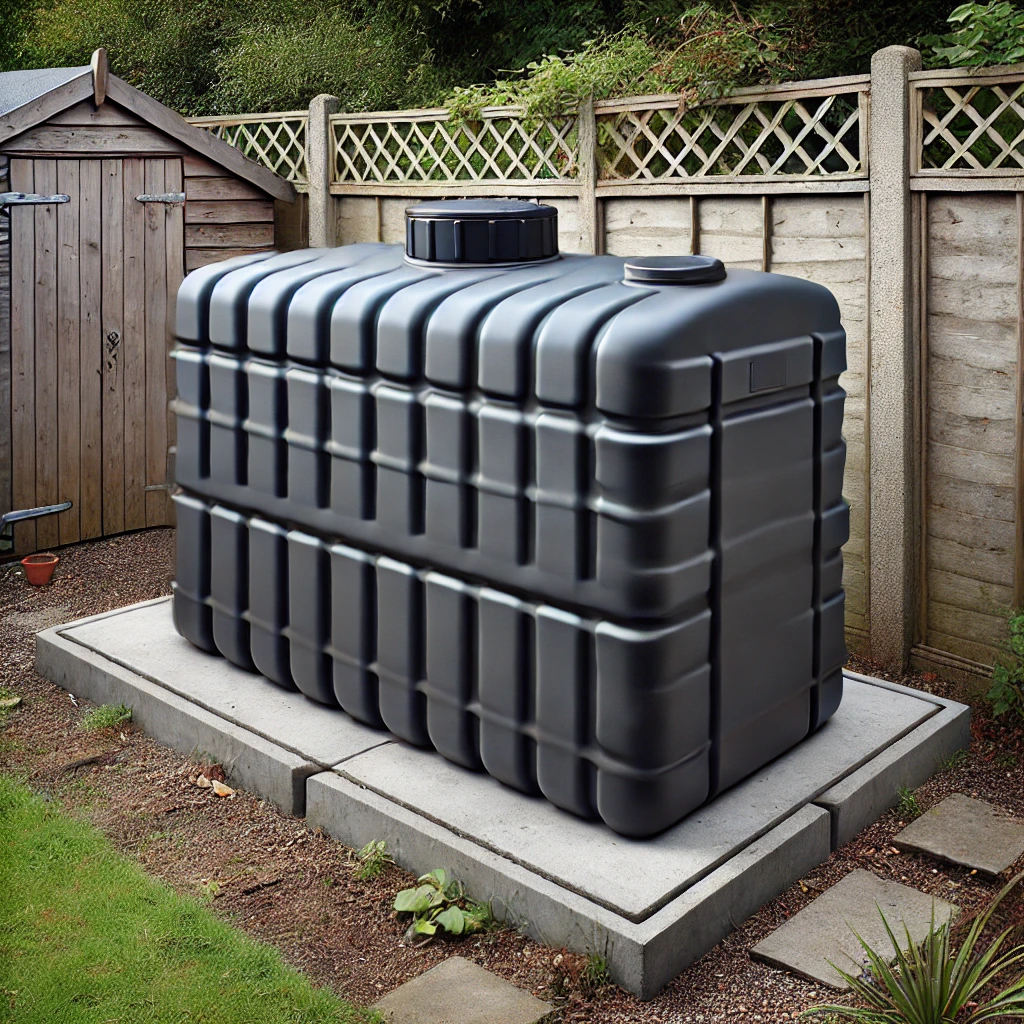Oil tanks are commonly found in commercial and industrial facilities and households that depend on oil for heating. There are a variety of different types that you might be considering, including a bunded oil storage tank. But what is a bunded oil storage tank?
This guide will explain what a bunded oil storage tank is. Read on to find out the answers to key questions surrounding the bunded tanks, including: are bunded oil tanks compulsory, and when do oil tanks need to be bunded?
We’ll also briefly compare bunded oil tanks with single skin tanks to help you make an informed decision if you are currently debating between the two options. We’ll conclude by showcasing the bunded oil tank benefits.
What is a bundled oil storage tank?
A bunded oil storage tank is a vessel containing two tanks. The ‘inner’ tank is the container which actually stores the oil. There is a second tank around the outside, acting as a protective layer.

There is a small amount of space between the two layers, known as the bund. This space will contain any oil leaks and spills should there be some sort of fracture or crack in the ‘inner’ tank.
Due to the double layer, a bunded oil storage tank provides several advantages, including environmental protection, avoiding hidden costs such as oil clean-ups, and lowering insurance premiums. But are bunded oil tanks compulsory? Let’s find out.
Are bunded oil tanks compulsory?
A bunded oil tank is not compulsory in every situation. However, bunded oil tanks are often recommended anyway due to the advantages listed above regardless of the circumstance or your location. But are there situations where oil tanks do need to be bunded? And what are the bunded oil tank benefits? Let’s find out.
When do oil tanks need to be bunded?
In some parts of the UK, including Wales, all oil tanks over 200 litres need to be bunded with a 110% capacity. It is worth double-checking your local regulations to ensure that you are compliant. In Wales, failure to comply results in a £5,000 fine, and you could face prosecution.
Regardless of your location, any domestic oil tank with a capacity of over 2,500 litres must be bunded. In a commercial situation, all oil tanks over 200 litres must be bunded. This tank must be able to contain 110% of the capacity.
An oil spill could result in large-scale environmental issues. Contamination is likely if the oil runs into drains or gets into water, and the Environmental Agency will want to investigate.
Oil tanks do need to be bunded if the vent pipe is not visible from the fill point. This is the case regardless of the tank capacity. This scenario is commonly known as a blind fill. Typically, this will apply to you if you are burying your tank in a ditch or river.
You will also need to consider your surroundings. If your oil storage tank is within 10 meters of controlled water, you will need to get a bunded oil tank. If your oil storage tank is within 50 meters of a drinking water source, your oil tank will need to be bunded.
You must also consider items such as drains, manholes or wells. If your oil storage tank is located in a position where a spill could reach either of those items, you will need a bunded oil tank.
Bunded vs single skin oil tank
If bunded oil tanks are not required, you might consider using a single skin tank instead. As a homeowner or business owner, you might analyse the bunded vs single skin oil tank options. While bunded oil tank benefits often tip the balance, single skin tanks may be appropriate in certain circumstances.
A single skin oil tank may be sufficient if you have a low budget and want to store smaller quantities of oil in a less sensitive location. However, a bunded tank is the better option if you’re storing large amounts of oil and require maximum protection against spills and leaks. In some cases, a bunded tank may even be a legal requirement, so check your local regulations.
If you are considering a single skin oil tank, it’s worth remembering the bunded oil tank benefits.
- Protecting the environment: Bunded oil storage tanks provide crucial protection against oil spills and leaks, safeguarding the environment from contamination and potential long-term damage.
- Cost savings: By preventing oil spills, bunded tanks eliminate the need for costly cleanup operations, saving substantial amounts of money and resources.
- Reducing the insurance cost: The added security of bunded tanks often leads to lower insurance premiums, significantly reducing the risk of environmental damage and liability.
- Reducing your personal concerns: Knowing that robust preventative measures are in place to protect against oil spills provides peace of mind and reassurance for tank owners and operators.
Now that you have weighed up the options of single skin vs bunded oil tanks and understand the bunded oil tank benefits, it’s time to dive deeper into the products available.
We have a huge range of options to suit your needs. From single-skin oil tanks to bunded oil tanks, shop our extensive collection today. If you need any advice on choosing the right oil tank for you, our friendly team is on hand and ready to help. Just get in touch.

